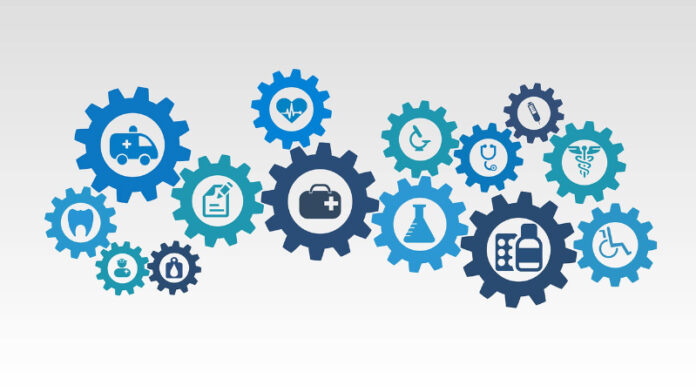Over the last three years, the healthcare sector has been overwhelmed.
This was partly due to the sheer number of patients seeking treatment for a nascent and highly contagious virus; but was exacerbated by outdated systems and processes, many of which were not equipped to deliver digital modes of healthcare services.
Conversely, for some healthcare services – for example obstetrics and gynaecology, the majority of consultations could not be conducted purely online, and providers needed to navigate the challenges of quality patient care while adhering to government mandates.
“Pregnant mothers need to come and be examined by our O&G specialists and have their scans. They feel better and more assured when they see our doctors (in person),” shared Eric Choo, CEO of SOG Health, during the “Building a Robust Digital Health Infrastructure” roundtable, organised by Jicara Media, and hosted by Equinix and Telstra.
The shift to digital
Pharmaceuticals and medical device manufacturers also had their share of business challenges amid the pandemic.
For many organisations, adoption of cloud technologies presented them a path to quickly address major technological gaps or inherent obsolescence. However, while cloud may have afforded enterprises more agility and scalability, it also presented some setbacks.
“With the evolving cloud and digital transformation (landscape), we sometimes do not understand what’s happening in that space, because it’s evolving. The pace at which you see technology being introduced, the capabilities out there, it’s just amazing. It’s quite difficult to keep up,” noted Hitesh H Timbadia, Director Project Management and Global IT PMO of Hoya Lens.
Similarly, data collection is subjected to a rapidly changing backdrop. Hoya Lens also had to ensure that its data policies were compliant with quickly changing laws and regulations.
SOG Health’s encountered different complexities. Integrating multiple vendors and solutions was a pressing concern that needed to be immediately addressed.
“Very often, we will need to acquire different software to integrate (data). The weakest link is always with the data exchange and integration, whereby you need an API or (to) export data from one software to another— that’s where the data leakage will often occur,” explained Richard Teng, IT Manager, SOG Health.
Moreover, Teng noted that securing against data leaks is not easy, but there is often a strong business need to integrate software to enable front-end or back-end digitisation.
“This will be one of the big challenges when we talk about cloud services, especially across software that we need to adopt. We are not sure whether we are able to overcome these challenges by data exchanges. Because over the years, we have seen that many data leakages are from third parties,” he added.
Meanwhile, for pharmaceutical firm AbbVie, the enforcement of social distancing measures during the pandemic presented a huge roadblock for their medical representatives.
“From a digital standpoint, even before COVID started, this was always a concern for us on how to become more digitalised. I think with COVID, it just accelerated. Most of our reps were not able to have face-to-face interactions with an HCP (healthcare practitioner), which was always a crucial part for us and a prime disconnect. We needed to enable channels through which we (could) reach out to doctors,” said Ramya Pallempati, Associate Director— ASIA Business Technology Solutions, AbbVie.
“Our prime concern is that we do not want to roll out platforms that overwhelm doctors, because if it’s coming from every pharma company, imagine what it would be like from the doctor’s perspective,” Ramya pointed out. “Everyone’s rolling out new apps, and why would (a doctor) want so many apps to be able to talk to different pharma companies? Primarily, our focus is to have one stable platform we get to know by piloting, so that we will not frustrate doctors with too many platforms, to disseminate the information that we have. We learned about developing digital solutions according to the personal preferences of HCPs, besides using the technology to customise content to the interest of the HCP.”
From a connectivity perspective, medical technology firms had a hard time reaching out to labs and hospitals pre-pandemic. With the accelerated digital shift, healthcare institutions have gotten more responsive to new technology and digital interactions.
Isaac Tan, Director of IT for APAC at Hologic Inc observed, “Now, at least we are able to enter into conversations with them and put forward the value proposition of technologies. So that (resistance mindset) is changing, and we hope this door continues to stay open post-COVID. More (health emergencies) will come and we would like to continue leveraging technology towards the creation of value for our patients as an outcome,” he said.
Progressing the ecosystem
Healthcare is a critical service, and there is a widely recognised sense of urgency to modernise systems and processes, especially following on from the most recent global health crisis.
Rajaneesh Kurup, Director, Digital Strategy at Equinix Asia-Pacific, understands why some organisations are hesitant to introduce change into their IT infrastructure.
“With the rapid need for transformation, how do you optimise adoption of new platforms into your business, and then integrate these systems? It’s not eventually these systems operating in silos that you want. The dilemma is whether to change the process first, or move whatever you have today into the new system. If you’re not transforming the process, and you’re just moving that process as it is into the new system, it’s not going to solve a lot of underlying issues,” Kurup said.
“When you start adding all these different new products, new services, and new solutions without fixing the foundation, that’s where the gaps are in terms of data leakage and other things. So, I will always start with the foundation. How do we fix the basic foundation? That will be the first step,” he continued.
Likewise, Michael Burke, Head of Partnerships and Alliances – South Asia at Telstra Singapore, saw that while many enterprises have plans of migrating their data and applications into the cloud, issues such as security would often cause hesitation. “We are now helping customers adopt modern security practices, such as zero-trust architectures,” he said.
Burke also noted that for those that have already embraced the cloud, becoming more business-agile is often next on the agenda for many of Telstra’ customers. “Increasingly, many customers are coming to us for assistance with reduction of their repetitive or manual tasks through the adoption of business process automation,” he explained.
Meanwhile, Hitesh stressed that while old habits may indeed die hard, there is a way to gradually modernise healthcare organisations’ IT infrastructure. “If you look at legacy systems, they’re not going to go (away). But bringing in cloud is how we should see a more seamless integration, from time to time, so that you can have the right sustainability for your customers or consumers,” he said.
As far as integration is concerned, Kurup also spoke about the business ecosystem connectivity, which has been growing in the last two to three years.
“Increase in collaboration within healthcare was one thing that we saw during COVID. Moving large amounts of data securely is key to collaborating better. We saw organisations coming together and working on a common solution – academia, technology providers were all part of the puzzle. COVID, in a way, was a catalyst for a lot of the collaboration that is happening today.” he added.
Integration is also of paramount importance for healthcare organisations moving forward as part of one industry, remarked Claudette Uy, IT Business Partner, Astellas Pharma.
“How do we enable our HCPs to reach their target customers? How does this come into the enterprise model wherein we enable leadership to make decisions based on the data that they have gathered from our target customers? So, it’s really an end-to-end process,” said Uy.
“We talked about the data integration interface between multiple systems. There is no one platform or software that can process all of this data, so we need to have a seamless approach in providing our key leaders the correct information to make decisions that will ultimately impact our patients,” she concluded.
















